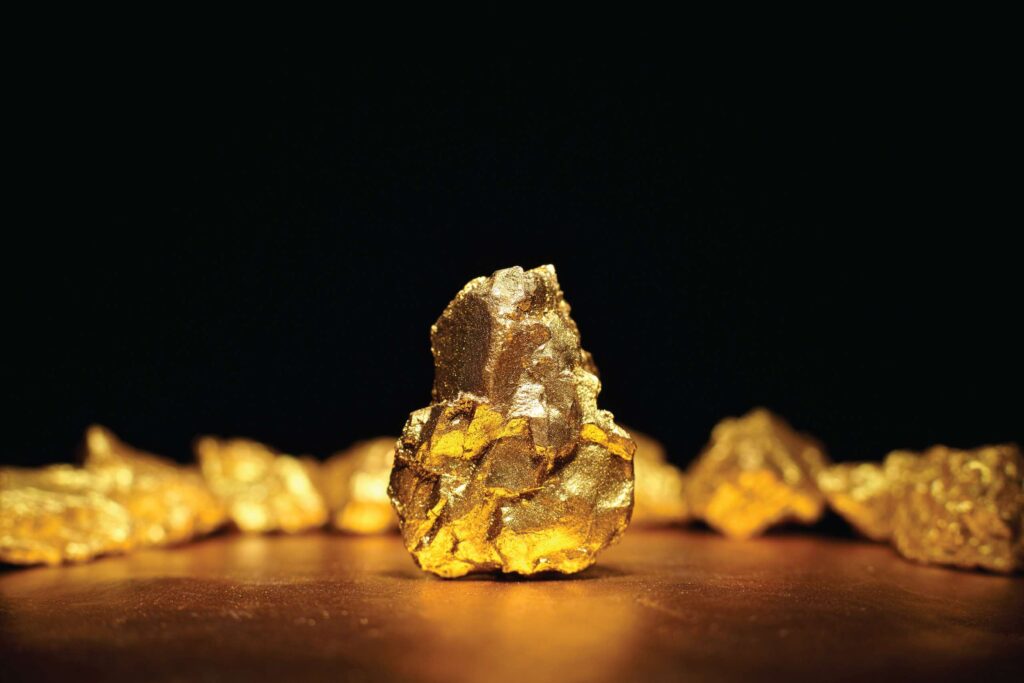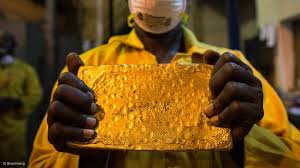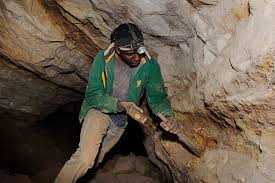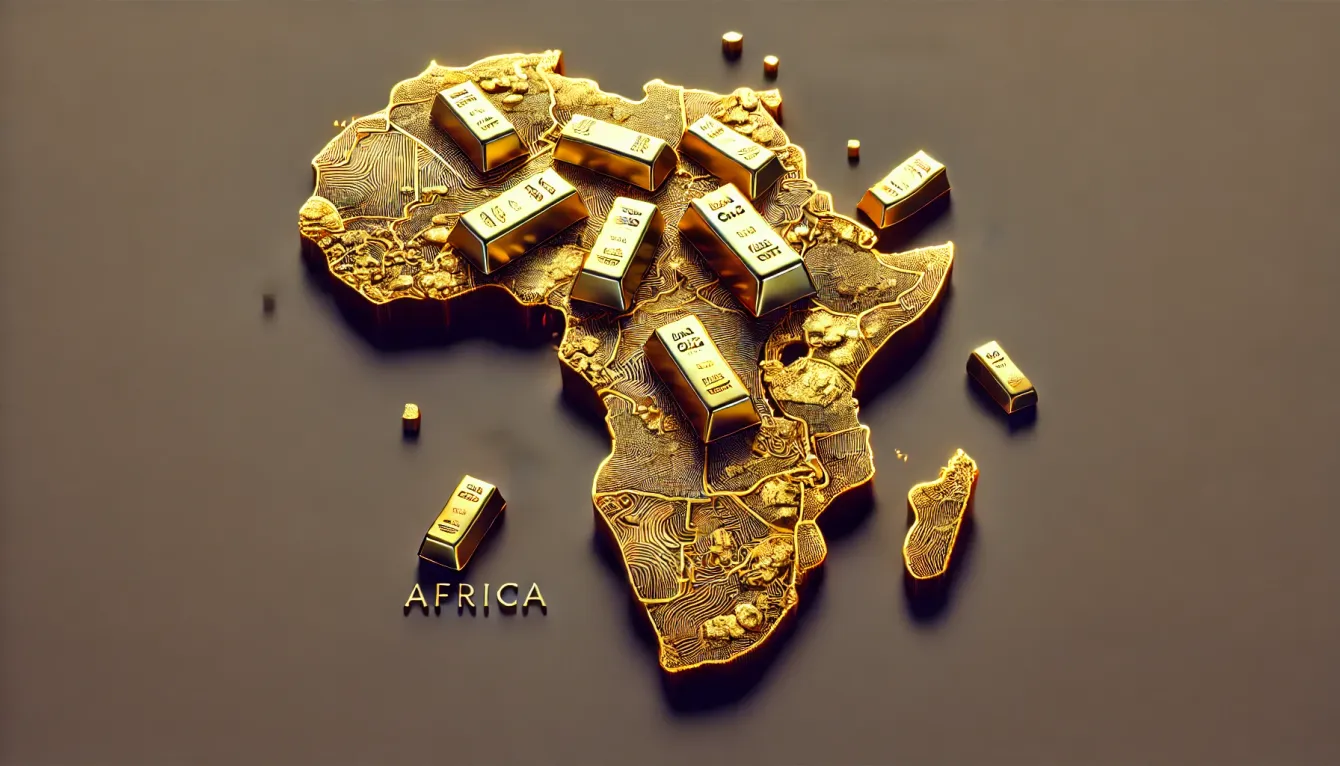Precious Metals

The Young Nigerians Caught in the Gold Rush Financing Terrorism in the Sahel
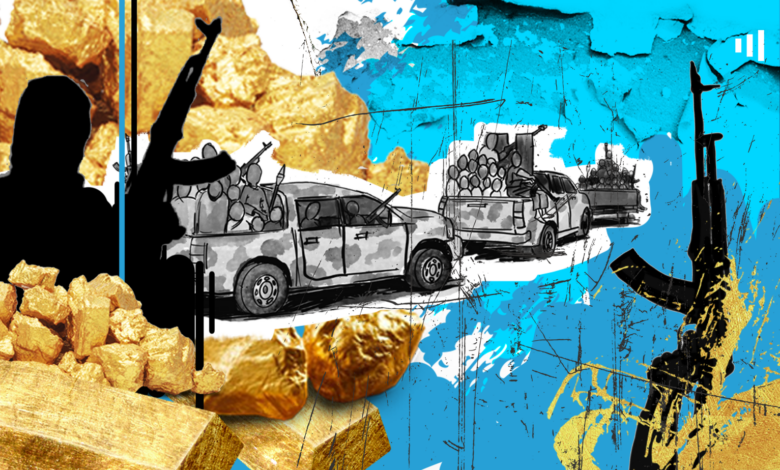
The dim light of the boys’ quarters cast a long shadow over his forehead as he walked into the tiny room of a ‘face-me-I-face-you’ apartment in the Damba area of Gusau, North West Nigeria. His eyes, dark and watchful, flicked between the scar on his right hand and the broken tiles sprawled across the floor. He would later tell me the story behind it. Bashir Suleiman is a Yan Arile, a catchphrase in Nigeria’s rural Zamfara used to describe young men who had left their dusty vicinity in search of fortunes that have grown increasingly scarce in the northwestern town.
It’s mid-March 2021. Bashir had just finished his secondary education when he learnt from friends about the land where “honey and milk” flowed ceaselessly and everyone could scoop to their fill. His father wanted him to follow in his footsteps immediately after school. Farming is the family’s main source of livelihood. Then, it was lucrative and flourishing. Zamfara is one of the country’s breadbaskets. But Bashir wouldn’t want to toe that path. One of his uncles was attacked on his farm by terrorists and spent months on the sickbed before he finally drew his last breath. Farming in rural Zamfara has become an extreme sport for many because of the activities of terror groups who have made the region another theatre of violence.
Bashir had other plans in mind; he would do his father’s bidding and work for some time to gather money for the journey to this promised land. So, he got a bike on a hire purchase. The 25-year-old worked his nose for over six months to gather about ₦120,000 ($72). He had paid off the motorbike, too.
In late 2022, Bashir and Yellow — a lanky colleague in his early twenties — were ready to journey through the dunes and the isolated watering points of the desert to Mali, their promised land of vast fortunes. It’s cheaper by road. Gold is Mali’s most important export product. The West African country is the continent’s third-largest producer of gold after South Africa and Ghana. Artisanal miners run the bulk of its thriving gold mining industry, piggybacking on the sweat of migrants, most of whom come from neighbouring countries like Burkina Faso, Guinea, Niger, and as far as Nigeria.
Trade and travel within and across the Sahara are as old as time. The movement takes goods and people from the belt of West Africa up to the coast of the North and vice versa. Many migrants also ply the route to reach Europe through the Mediterranean in search of greener pastures. HumAngle has learned that seasonal miners who come from the Niger Republic to work in the mines across Nigeria’s North West and parts of the north-central region often link young men in these communities to their counterparts in Mali.
In Africa, accurate statistics about migration are hard to come by. The United Nations says no fewer than 31 million Africans live outside the country of their birth. Most of these travels are within the continent — only 25 per cent go to Europe. This is made more accessible by laws promoting freedom of movement and trade within the continent. In West Africa, a similar free movement agreement allows anyone from the member states to travel within it without applying for a visa, making movement within the regional bloc easier and cheaper.
With a bag full of dreams, fewer clothes to avoid suspicions, and some food, the journey began just a few walks outside the central motor park in Gusau, Zamfara state capital. A minicab was waiting to transport them to Sokoto. The northwestern state is approximately 103 kilometres from the neighbouring Niger Republic. The bustling border town of Illela is just a stone’s throw from the Birni-N’Konni area of Niger’s Tahou region.
“Where is the job in the country?” Bashir protested. He had recently returned from a trip to assist his family during the annual planting season. “It might be a little dangerous working in the mining sites, but it’s nothing compared to staying here idle and getting killed by the terrorists.”
Since the North West conflict escalated in 2011 and disrupted the economy of the agrarian region, forcing major businesses and farmlands to slow to a crawl, the area has become a lair of illegal labour migration to the Sahel — a region that accounts for large chunks of global terrorism deaths since 2021. Many of its young boys, like Bashir, are trooping to countries like Mali, where they engage in artisanal gold mining activities.
Most of the landlocked country’s gold mining regions lie in Western and Southern Mali. There are also mining sites in parts of Northern Mali where Azawad rebels and Al Qaeda-linked jihadists operate. In January, Russian fighters — formerly Wagner mercenaries — took control of the Intahaka gold mine, the region’s largest artisanal gold mining site, which had been disputed for many years by various armed groups.
The precise number of small-scale mining sites is unknown to the Malian government. But statistics put it at over 350 across Western and Southern Mali. The figures exclude the rebel-controlled territory of the North.
Satellite images, corroborated by multiple sources we spoke to, show that most Nigerians, especially those from Zamfara, work in the three major mining sites in the rural Tinzaouaten commune, located far North East of Mali on the border with Algeria. When Bashir got to Mali, they drove to Kidal. Set on the dust of the desert, Kidal is a crucial stopover between Mali and Algeria. Most Hausa-speaking migrants — Nigerians and Nigeriens — stayed here. The shared identity and language helped them to settle and get along with their ‘brothers’, who introduced them to other miners.
“The miners would come to us and ask if there are those willing to go to the forest to mine. They would inform us the number of miners they needed and the condition of the mines if they are old or new,” Bashir paused to gobble three awaras (cheese), much to the annoyance of Yellow, who frowned at his audacity.
“Some, however, are not always honest,” he continued. This often cost them their lives. Mining accidents are common in the country as most unregulated miners use unsafe methods to dig for gold. At least 73 people were killed in January after a tunnel collapsed in a gold mine in the south-western Koulikoro.
“There is no fixed income. The amount of gold that was mined would be divided into three. They take two and the miners one. For instance, if what was gotten is worth ₦100,000, they would take ₦60,000 and leave the miners with ₦40,000, which we would then share depending on our numbers. We were often given the choice of either being paid in gold or money. We always choose the latter because they are the only ones who know where to sell the gold.”
The migrants are provided with basic essentials like food, water, and tools. He says the working conditions leave so much to desire. Many only stayed because they could not afford to return home without the promised riches. Some workers dig shafts and work underground with torches strapped to their foreheads. Some are charged with pulling up and crushing the ore, while others are to pan it for gold. Many of them suffer severe neck or back pains and risk long-term spinal injury from carrying heavy objects. Some have also sustained injuries from falling rocks and sharp tools or fallen into shafts.
“If you offend them, they would hit you or take you to the rebels who would then prosecute you. And if they met you not working, they would flog you and force you to work. They wield different types of guns. We often work overnight. We take no breaks. And if we protest, we would be abandoned there,” Bashir recalled.
Young person in a green printed shirt standing against a textured wall.
Yellow works in one of the gold mines in the Tinzaouaten part of Algeria. Photo: Abiodun Jamiu/HumAngle
Through the control of sprawling mining sites, taxation and securing transportation routes, gold mining serves as the lifeblood of terrorism for rebel forces and jihadists in the central Sahel region and other parts of Africa. The mine sites, particularly in areas where government forces are absent, are not only a hideout but a revenue source with which they recruit new members and buy arms and explosives to continue to exert control. In some areas, they ordered gold miners to sell only to them at fixed rates. Much of this is smuggled out of the region, often to buyers in the markets of Dubai, Switzerland, and India. In 2022, a whopping 435 tonnes of gold — mainly from the red-dust open fields of Mali, Ghana, and Zimbabwe — were illicitly exported from the continent, primarily to the United Arab Emirates.
Between 2012 and 2022, the smuggling more than doubled, so much that 2,569 tonnes of gold exported from the continent into the UAE was not accounted for or declared for export in most countries on the continent. The average price of gold over these years amounts to a total value of $115.3 billion. Much of this returns to the conflict-ravaged zones where Bashir and Yellow work, financing and blowing the ember of conflict.
“Gold mining has become a major source of funding for jihadists and other armed groups operating in the Sahel,” Oluwole Ojewale, an analyst at the Dakar-based Institute for Security Studies, told HumAngle. “Most often, this is a result of the very low government presence in these areas. The armed groups turn to different sectors for funding. Previously, it used to be cattle rustling, but the major source at the moment is gold. That’s why hotspots in the Sahel that have become bases for jihadist activities are, in most cases, mineral-bearing communities with no government presence.”




